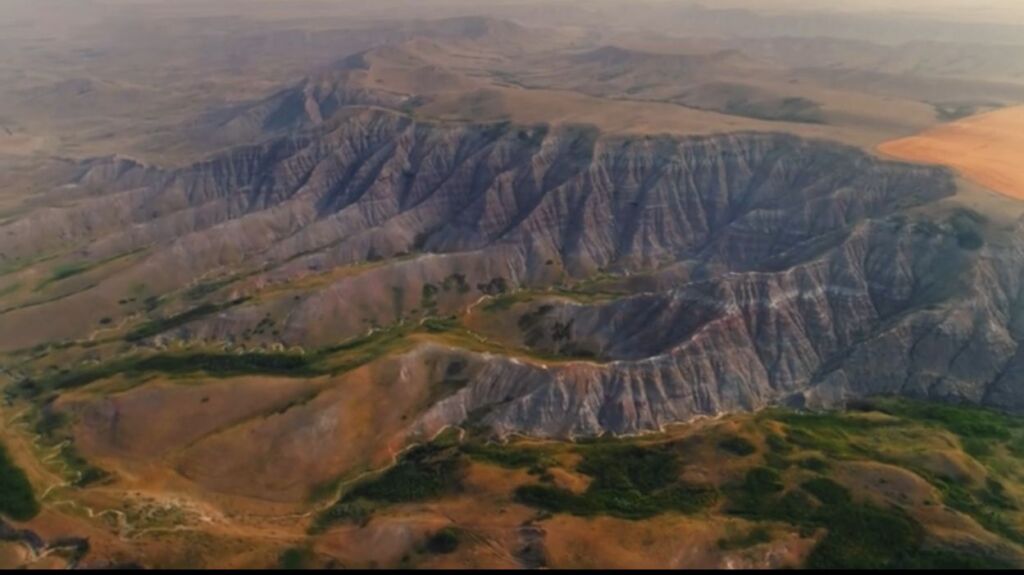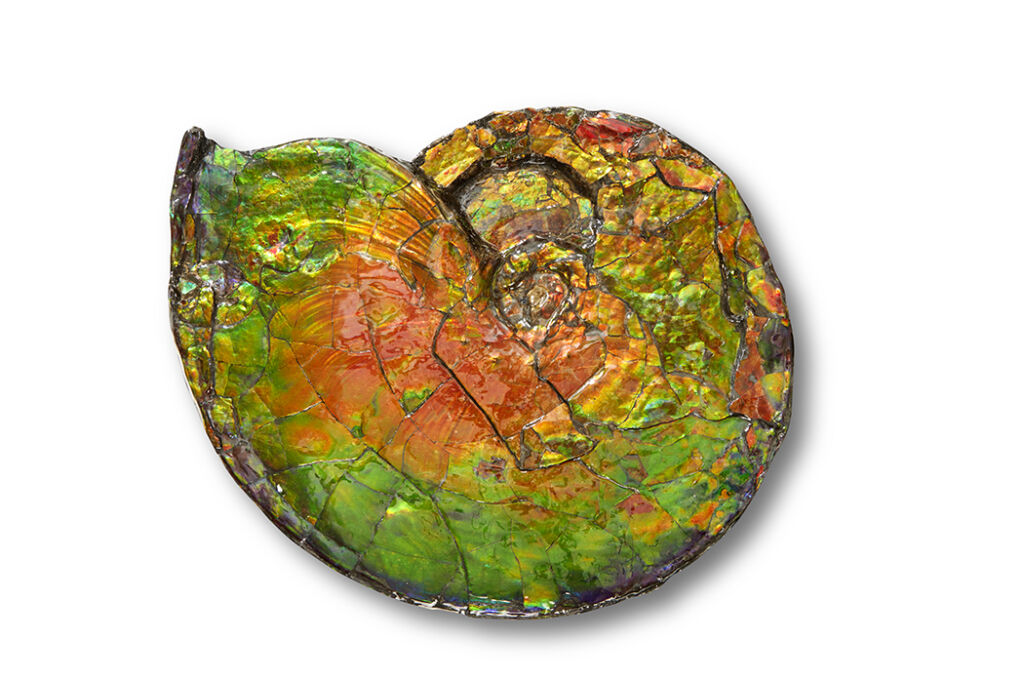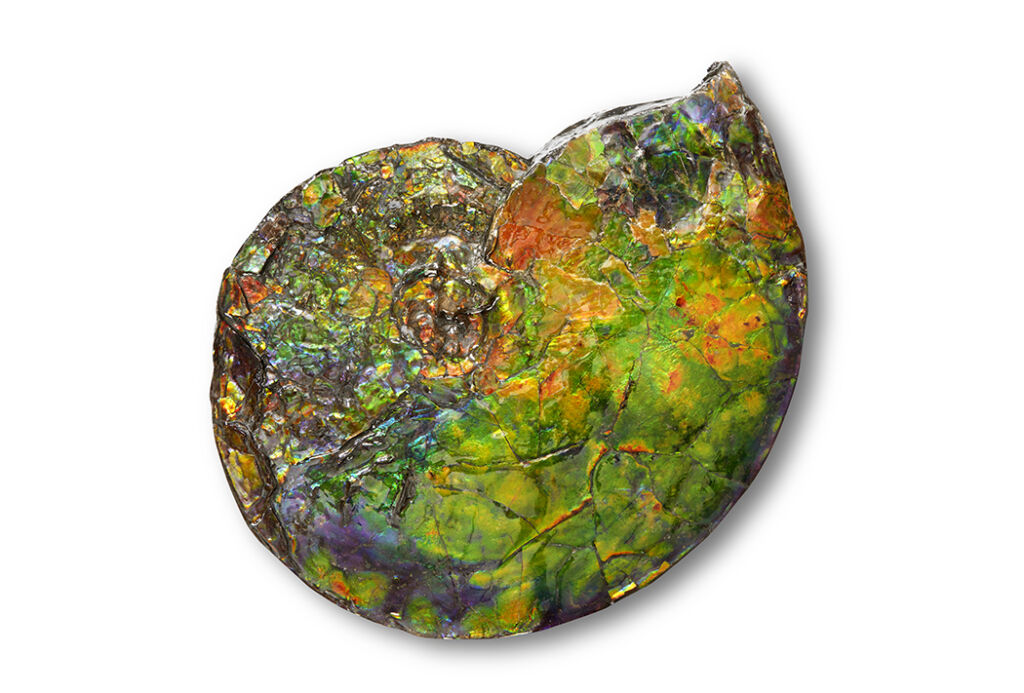The celebrated history of colourful Ammolite is deeply embedded in the heritage and culture of Alberta, Canada, dating back 71 million years. To keep history alive, we commemorate the 13th annual National Fossil Day in North America today, an annual day of awareness that brings science and appreciation for fossils to the forefront.
Creating conversation and educating the public, particularly the next generation of paleontologists, sparks intrigue from the tiniest detailed specimen to the largest prehistoric find. And at the core of Iniskim Ammolite, we strongly believe in sharing the beautiful journey Ammonite has embarked on to become what it is known as today: Alberta’s gemstone.
An Underwater Treasure
Ammonite has a rich and colourful history that dates back to the Jurassic and Cretaceous period – 66 million years ago. During that time, areas that are recognized as Canada and other parts of North America were submerged under water. Mollusk-like marine creatures, called Ammonites, lived in the inland Western Interior Seaway, now known as the eastern slopes of the Rocky Mountains in Southern Alberta.
With their spiral shells and tentacles, they would become what we now know as these incredible fossils. Extinction at the end of the Cretaceous period saw the Ammonite shells fall to the ocean floor, remaining until being unearthed and discovered millions of years later, first by the Blackfoot Tribes.

Two Distinct Processes
As fossilization began for Ammonites, two distinct processes happened at the same time: some shells sank into the sea floor, with layers of sediment encasing the shells where they were perfectly preserved. These became the Ammonite fossils we now know and study, capturing a moment in time.
However, well-preserved Ammonite shells found in Alberta underwent a vibrant and colourful transformation when the aragonite within them began to mineralize. The mineral composition of fossilized Ammonite shells consists of hundreds of thin, iridescent layers of minerals. The iron, manganese, and aluminum replaced the original material, creating some of the most stunning hues we see today.
With the sparkling shades of green, blue, purple, violet, red, orange and yellow/gold, admiring an Ammonite is a treat, and each is unique based on the presence of each mineral and the thickness of the layer.
Want to learn more about Ammonite fossils? Dive in and discover more characteristics and facts about Ammonites here.
A Canadian Specialty
Ammonite fossils can be found worldwide, but the Iniskim Ammonite you see are primarily discovered in Southern Alberta, Canada. The Bearpaw Formation is the premier site for finding these incredible specimens, as it has been considered the perfect alchemical crucible for preserving the highest-quality gem-quality Ammonite fossils.

The process is credited to the layers of bentonite clay that protected the Ammonite from any disturbance and fostered the perfect environment for the mineral transformation that Ammolite endured.

A Snapshot of the Past
Admiring an Ammonite fossil’s beauty means we are looking at a picture of prehistoric marine life. The intricate designs and patterns, including deep and shallow chambers of the Ammonite allow us to explore and appreciate a time in the past.
When an Ammonite glimmers in the light, the hues of colours and sheer majestic beauty makes this fossil an impressive and rare treasure.
As a leader in the industry, we aim to provide the highest quality products while preserving this history and paying homage to its origins. Share our passion for this radiant, iridescent fossil and visit our shop to see our collection. Iniskim is proud to celebrate National Fossil Day and continue to bring the joy of Ammonite to the world.



